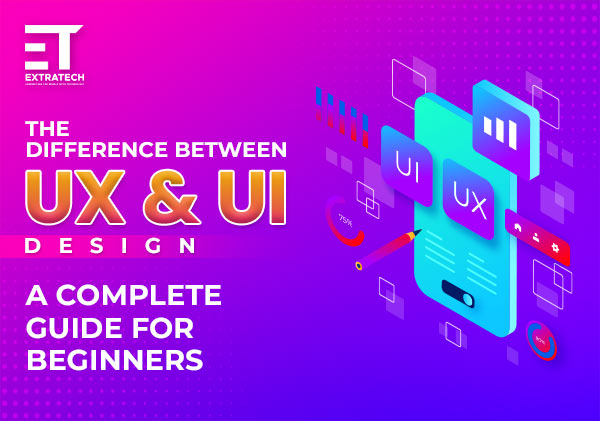User experience (UX) design
UX design (user experience design) is the process of designing products, services, and experiences to create positive and seamless experiences for the user. This includes researching, conceptualizing, prototyping, and testing the design. UX designers focus on the usability, accessibility, and desirability of a product and how it fits into the user's needs and wants.
User interface (UI) design
UI design (user interface design) is the design of the user interface or a product's visual and interactive elements. UI designers focus on the layout, typography, color scheme, and other visual elements of a product, as well as how users interact with those elements.
What’s the difference between UX and UI design?
UI design is designing the look and feel of a product, whereas UX design is designing how users interact with a product.
UX and UI designers often work together to design visually appealing and user-friendly products.
Solutions vs. Aesthetics
UX designers concentrate on designing solutions that meet the needs of users. This requires in-depth knowledge of those user needs before a user experience designer embarks on creating a design solution.
The aesthetics of the product are more important to UI designers. While user interface designers also aim to solve design problems through how a product looks and the interface is set up to function, they don’t necessarily look at it through the same lens of user needs.
Individual Parts vs. User Flow
UI designers put their attention on the component pieces of a digital product. They only focus on how those sites flow together from a visual standpoint when they look at individual pages, like a product page or checkout page.
UX designers pay greater attention to how users interact with the entire product. They’re looking for bottlenecks or pages where users might be confused or abandon the product. User experience designers look for consistency in the whole experience from when a person first visits the product until they complete the desired actions (and often what happens after that).
In short, UX design is concerned with the overall experience of using a product, while UI design is focused on the look and feel of the product itself. Both UI vs. UX is important for creating a successful product.
UI vs. UX Design: Which Career is for You?
While UX and UI design goes hand-in-hand, you don’t need to be a master of both. Both UI and UX design careers can be rewarding and challenging, and which one is right for you will depend on your skills, interests, and career goals. If you have a strong eye for aesthetics and enjoy creating visually appealing designs, then UI design might be a good fit for you. If you are more interested in understanding how people use products and how to make them better, then UX design might be a better choice.
What does a UX designer do?
1. Wireframing and Prototyping
Wireframes and prototypes are made by UX designers using digital tools like Sketch, Figma, InVision, or Adobe XD.
2. User Research
Research skills are necessary to identify user needs. UX researchers gather information about their target market and create user personas using approaches like diary studies, interviews, questionnaires, and more.
3. UX Writing
UX writing is crafting UI copy that guides the users through a product. Effective UX writing allows users to navigate a product and complete tasks with minimal friction intuitively.
4. User Testing
To assess the usability, accessibility, and utility of a product, one needs experience with A/B testing, product analytics, and benchmarking. The ability to analyze research results in a way that will guide product enhancements is another work that UX designers do.
5. Visual Communication
Designers employ visual components to elicit emotions, improve recognition, enhance usability, and convey or arrange the information.
6. User Interface Design
UI skills include color theory, branding, and typography. To create a product that is memorable and practical, designers must be able to use UI design features.
What does a UI designer do?
1. Look and feel of the product
- Customer analysis
- Design Research
- Branding and graphic development
- User guides and storylines
2. Responsiveness and interactivity
- UI prototyping
- Interactivity and animation
- Adaptation to all device screen sizes
- Implementation with developer
3. Closely working with developers to transform designs into a working product
Wrap Up
The truth is that UI and UX design are both essential steps in creating digital products, despite the question "which is better: UI or UX" being asked frequently. You'll often see businesses advertising for "UI/UX Designer roles" because the two positions complement one another and are occasionally filled by the same designer, particularly on smaller design teams.
Learning the roles and fundamentals of both UX and UI can open up more career success and opportunities, regardless of your career path. If you're eager to begin your UI/UX career, compare the top online UI UX courses based on your specific learning objectives to get going. You can contact us for more information if you have any queries.

